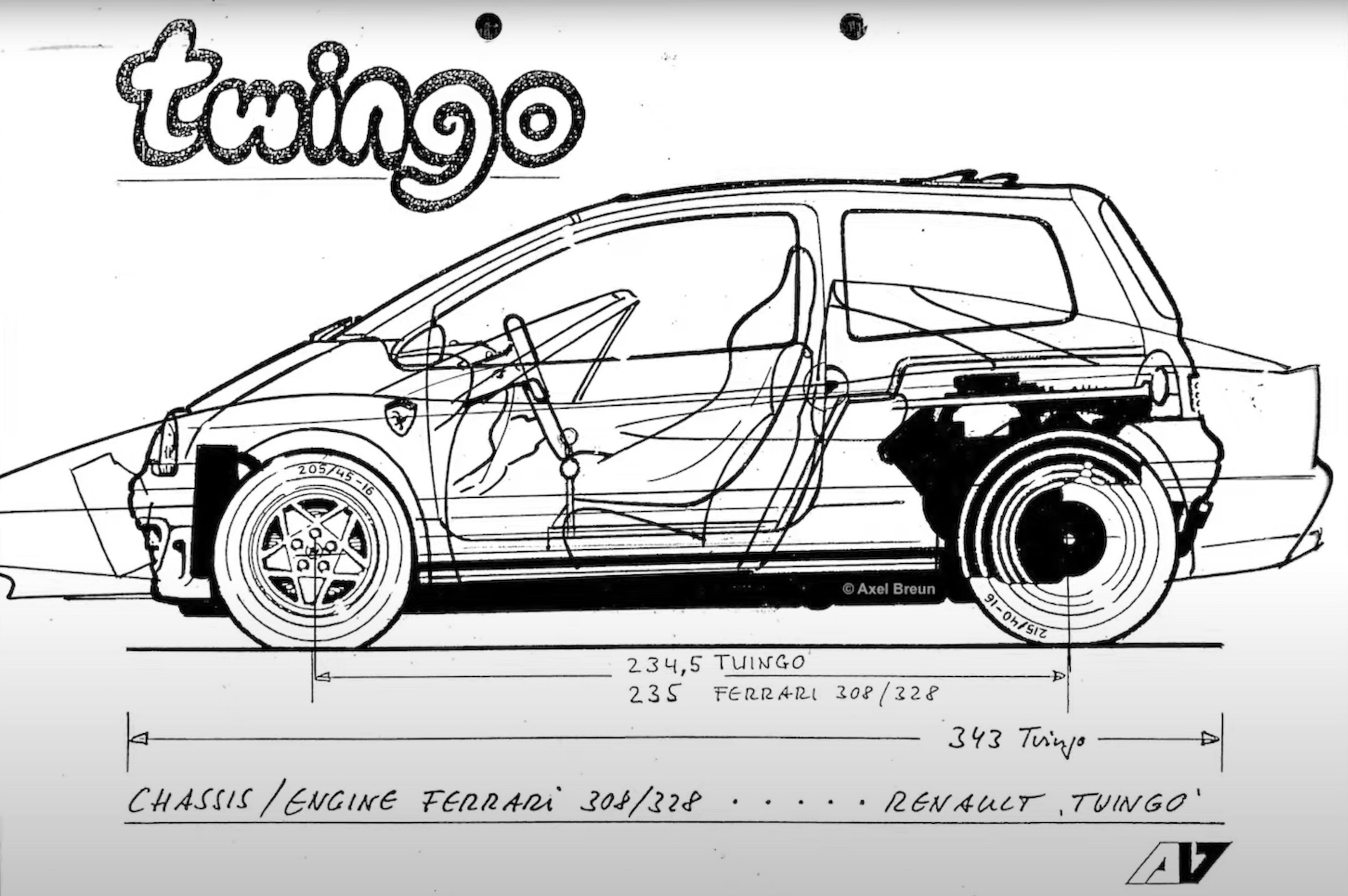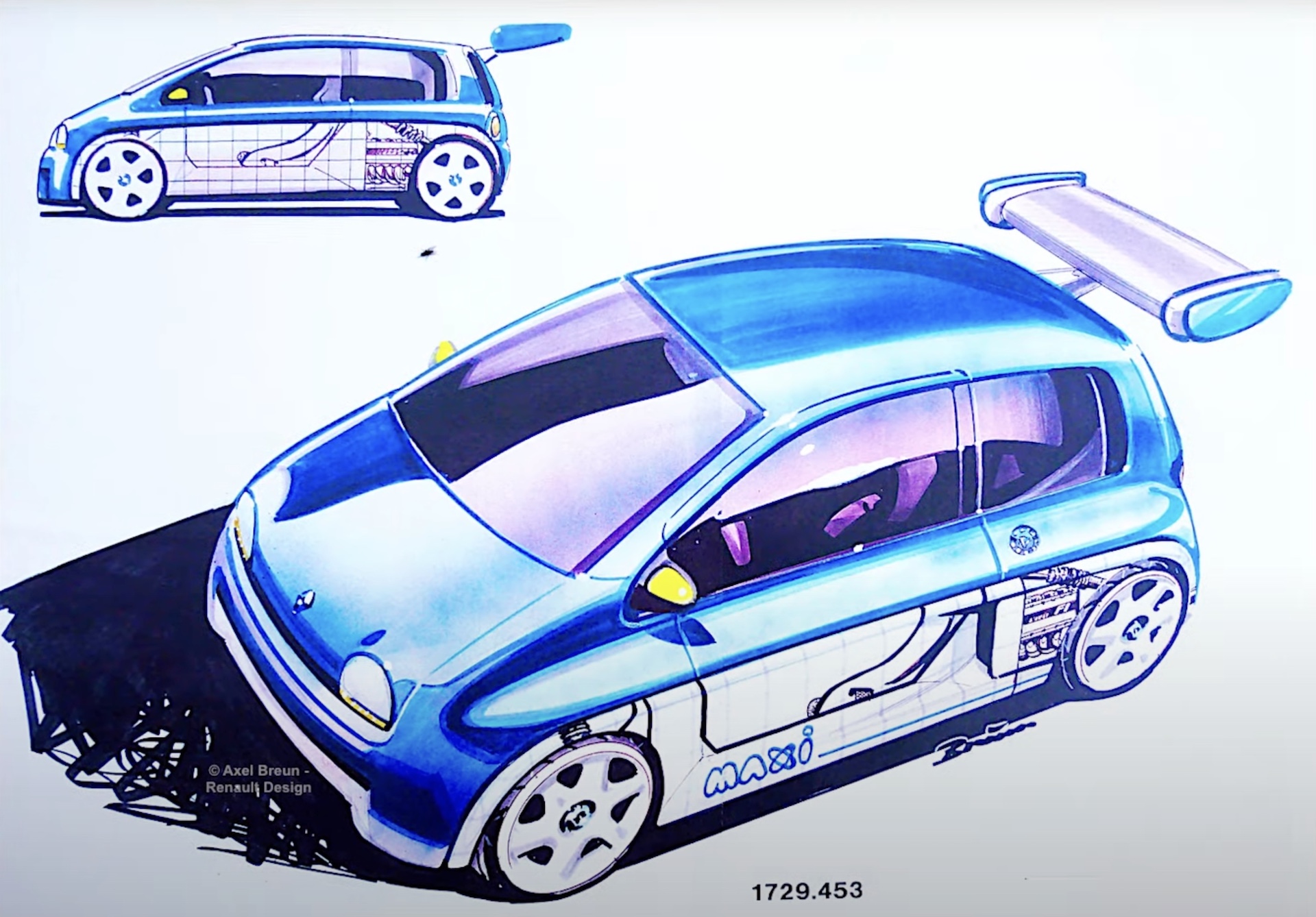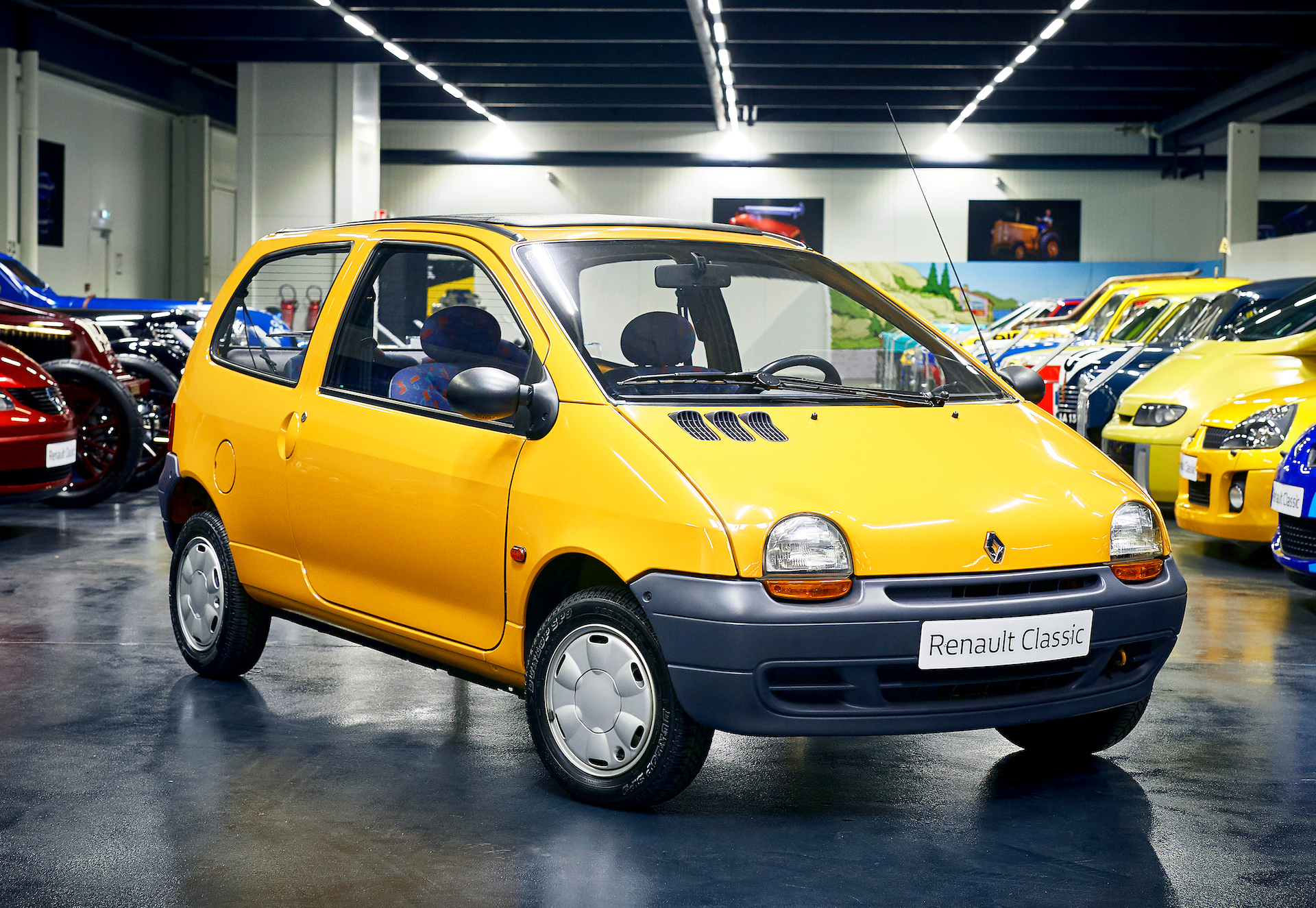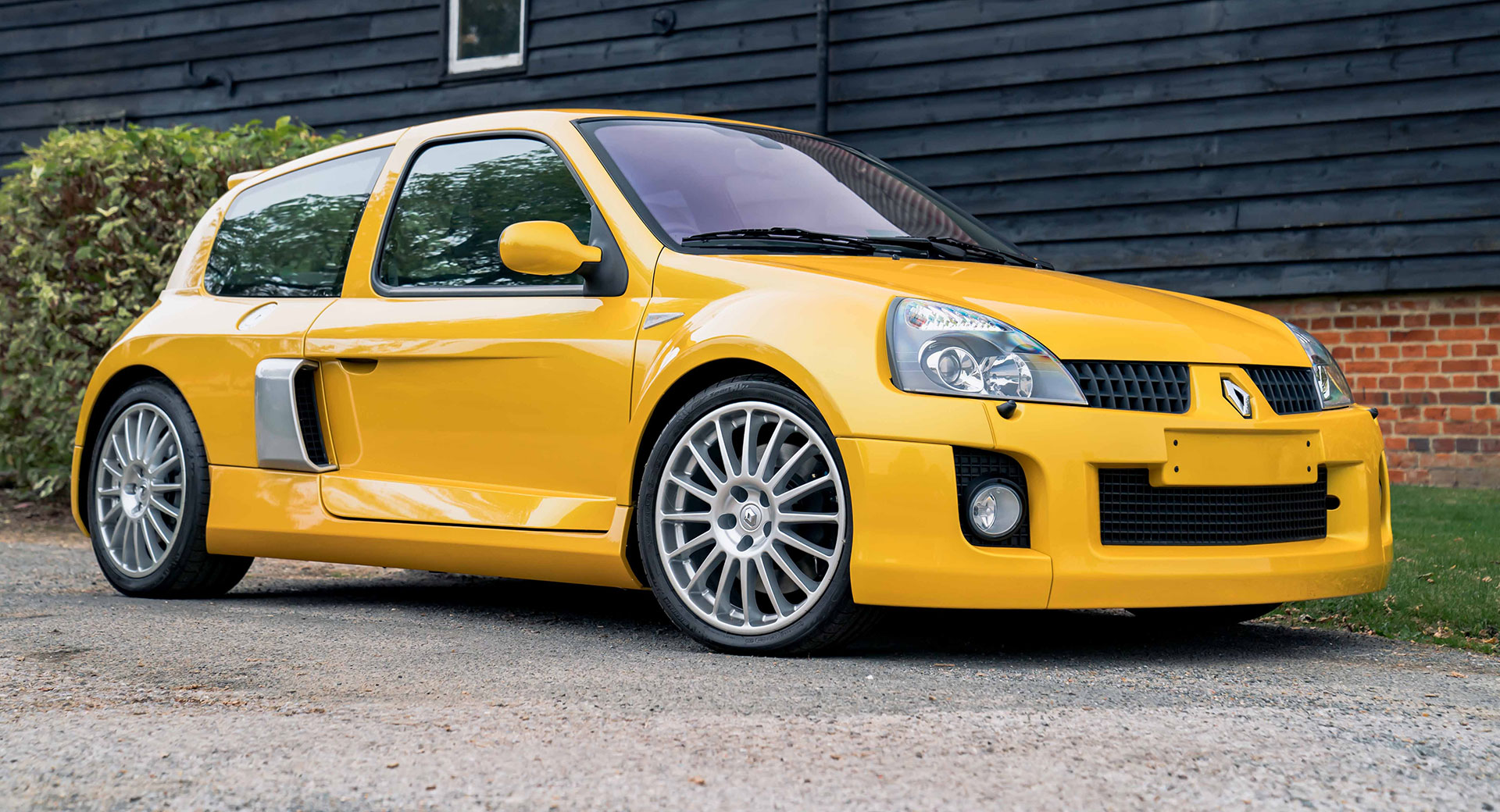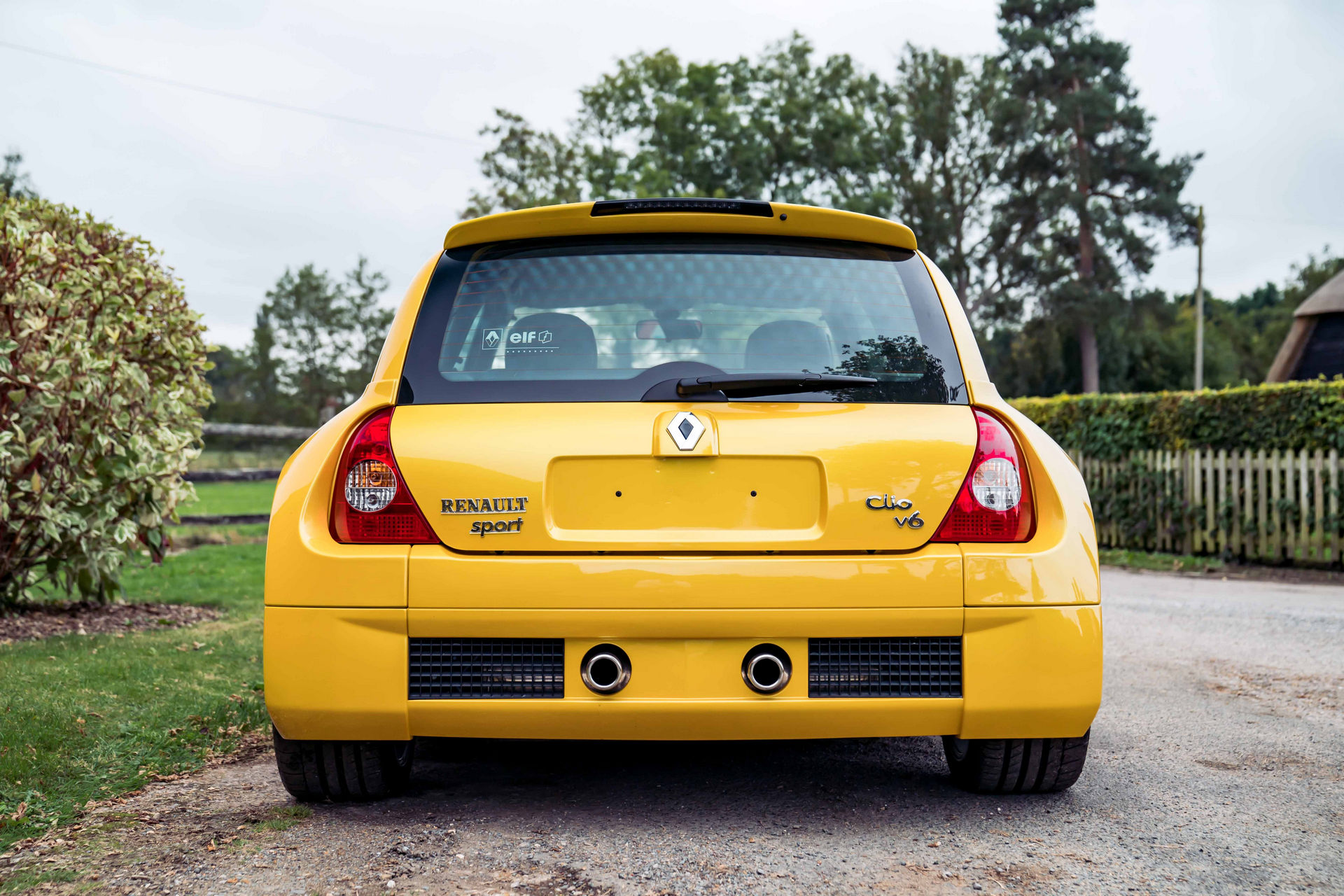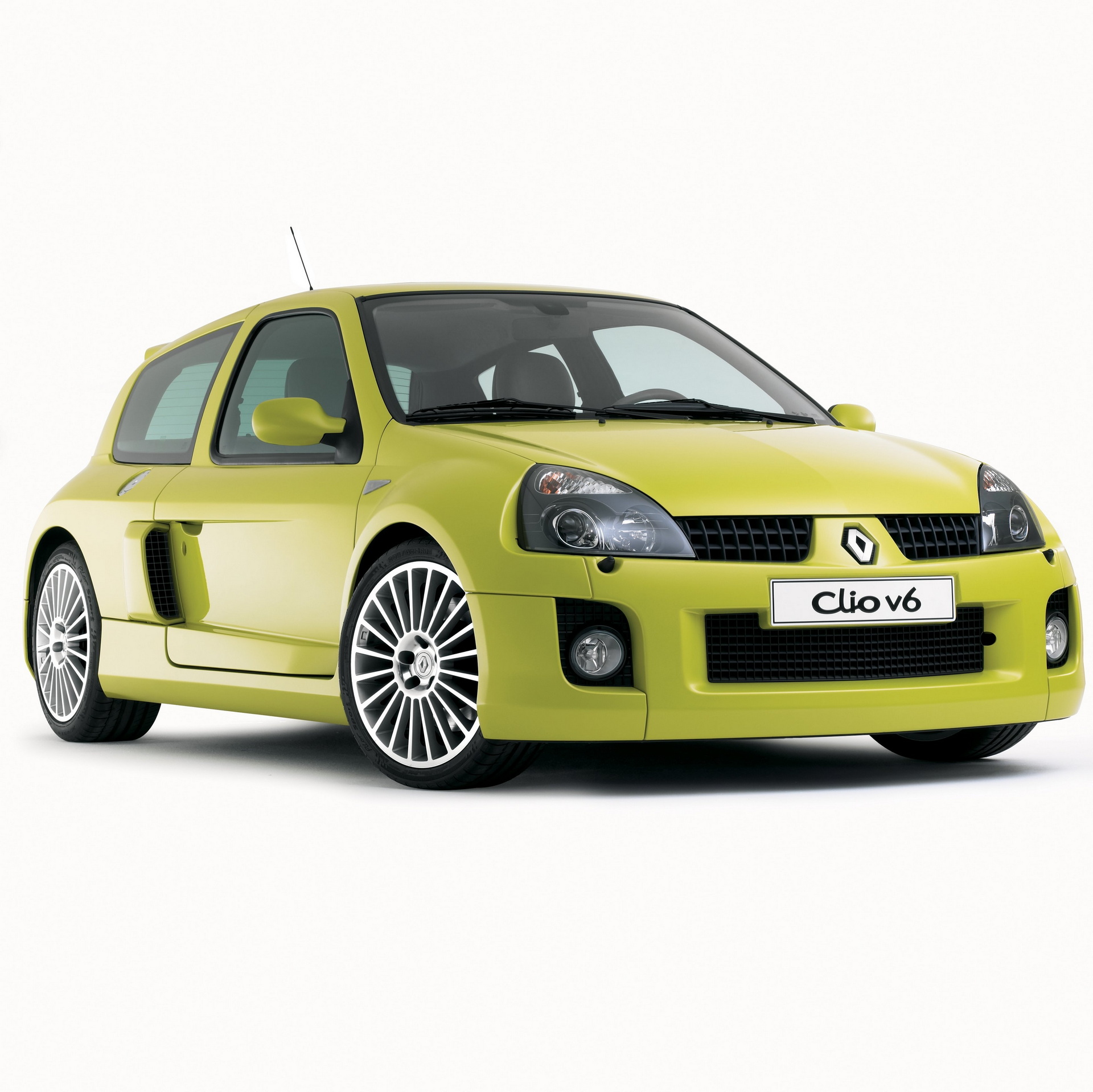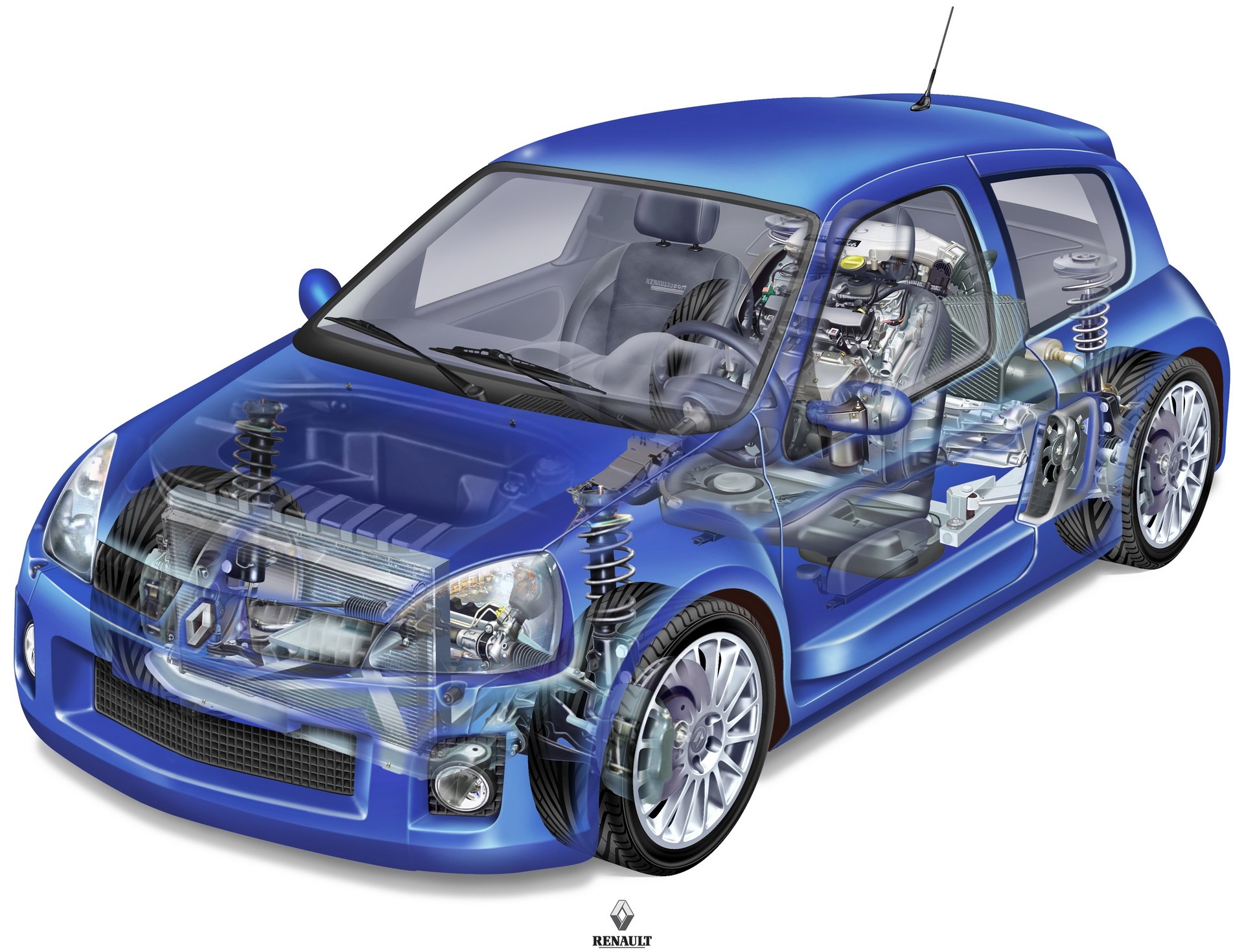The Renault Clio V6 is one of the crazier cars to come from a mainstream carmaker. With a 3.0-liter V6 sitting in the space where the back seats normally live and driving the rear wheels which are pushed out like a supercar’s and covered in fat flared arches, it’s nothing like your everyday front-wheel-drive econobox Clio.
But a new documentary with the designer responsible for the Clio V6 explains that the project started out with an even wilder idea of dropping a Renault Twingo body on a Ferrari 308 chassis and running gear as a personal project.
Axel Breun, who’s currently a senior design director at Renault, tells the Crown Unfiltered podcast team how he loved the look of the one-box Twingo city car from the 1990s, but was disappointed that such a bold looking car was let down by a crappy old-tech pushrod engine that could be dated back to the Renault 4 of the early 1960s.
An initial idea to drop in the turbocharged three-cylinder 12-valve engine from the Daihatsu Charade GTTi was scorched by problems mating up the electronics, but rather than scaling back his ambitions, Bruen went even wider, He began looking for a car with a wheelbase that would match the 92.3-inch (2345 mm) Twingo’s, and found one in the Ferrari 308 (92.1 inches, 2340 mm), which had a separate chassis, so theoretically could be fairly easily fused with the little Renault.
QOTD: What’s The Best-Looking Hot Hatch Of All Time?
“The good thing was that the Ferrari came from a different [older] period, so the track was not that wide, whereas the Twingo, for its category was a very wide car,” remembers Breun.
But although he persuaded Renault to donate an unused Twingo shell and came close on more than one occasion to buying an accident-damaged 308 to get the project really rolling, Breun couldn’t quite pull the funds together to make it happen.
Fortunately, the sketches behind Breun’s desk had gained influential admirers, including Renault design boss, Patrick Le Quemont. And because Renault’s product planning department was keen to promote Clio’s performance image, the idea was rescued, overhauled, and put into production, but now in a Clio body, and with 3.0-litre Laguna V6 power.
Breun’s been instrumental in some major designs at Renault, including the rebirth of the Alpine brand, but you can tell he’s hugely proud of both his mini supercar idea, and also the very first example off the TWR line that was gifted to him by way of thanks, and now sits in his own garage.




